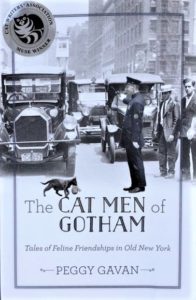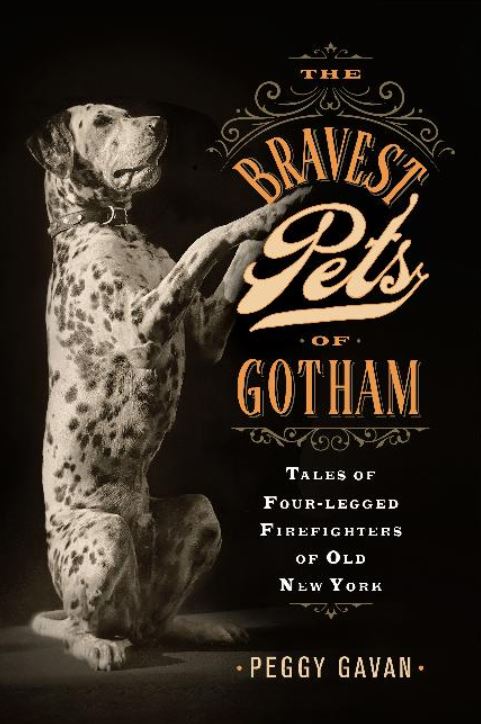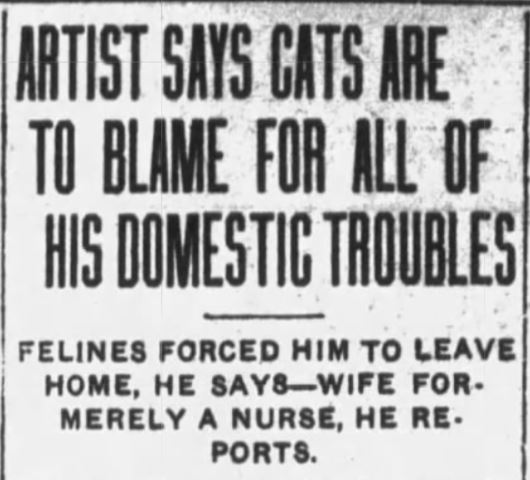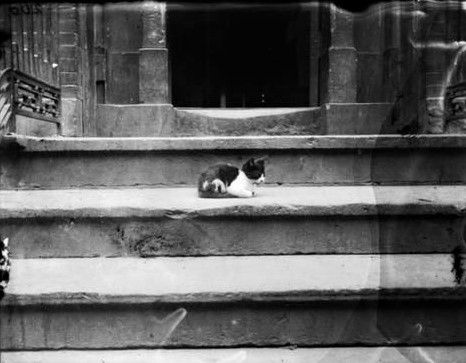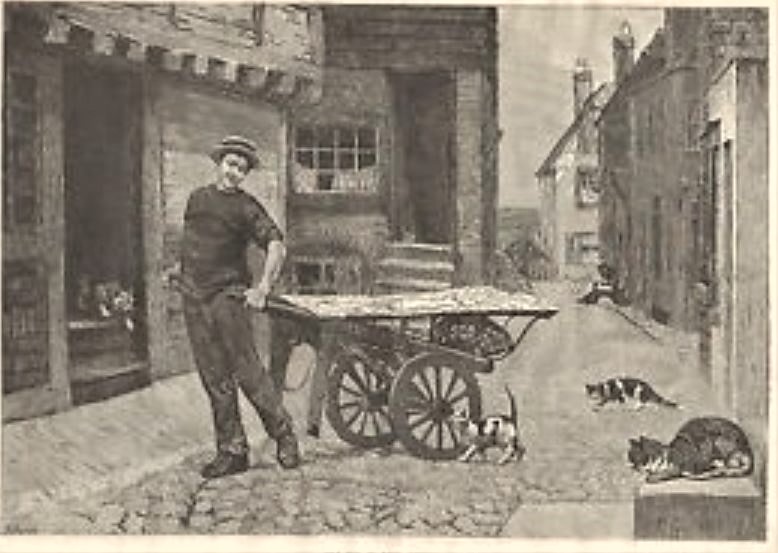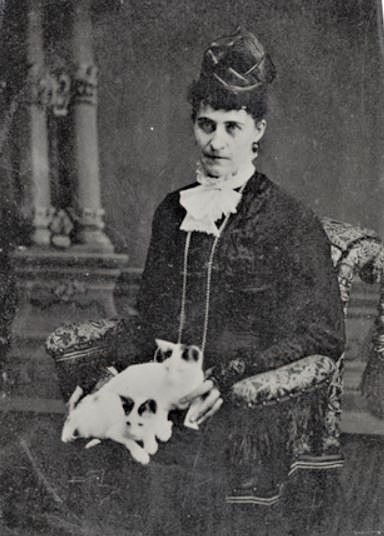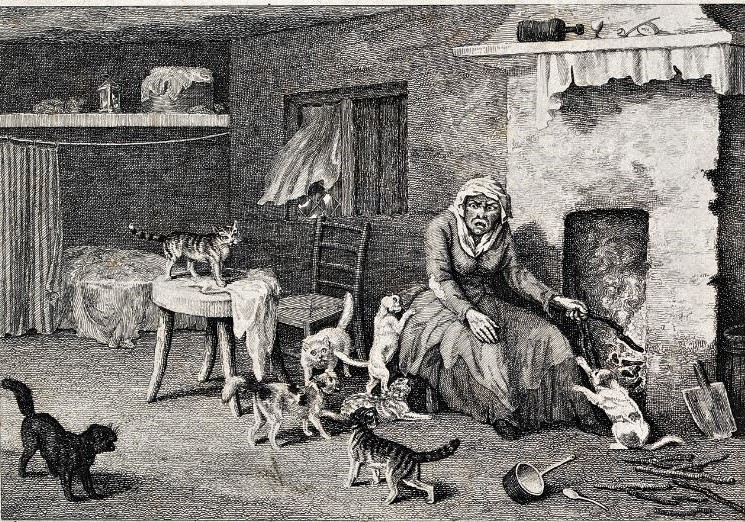
“Go up Tenth Avenue and in various cross streets running down to the river are some of the worst blocks in the city; and there are blocks corresponding with them along the East River. The names of some of these places are significant: ‘Battle Row,’ and ‘Hell’s Kitchen,’ and ‘Sebastopol.'” — James W. Shepp and Daniel B. Shepp, Shepp’s New York City Illustrated: Scene and Story in the Metropolis of the Western World (1894).
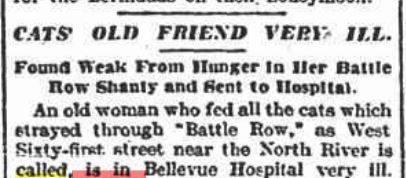
Like many of the homeless “crazy cat ladies” throughout New York City’s history, Helen Sawtelle had once had a home. Until she lost it for some reason.
Perhaps the reason she ended up on the streets of Manhattan without a place to call home was loss itself. Maybe she lost her job or all her savings, or maybe she lost a spouse or other loved one who had supported her. Maybe she had lost some of her mental faculties. We’ll never know for sure.
Read the rest of this entry »